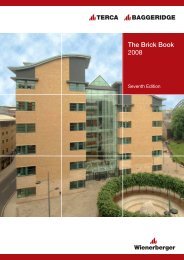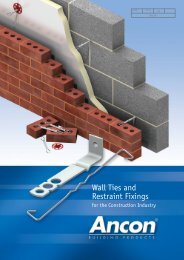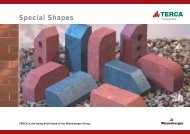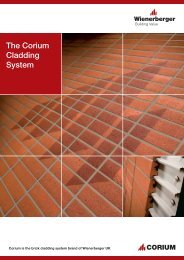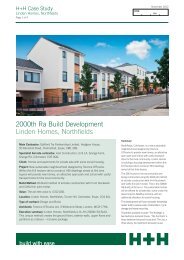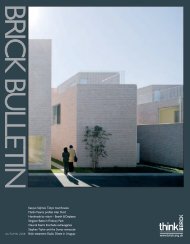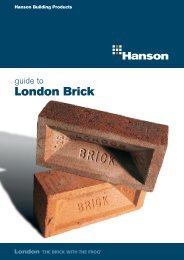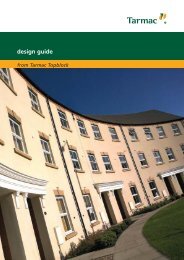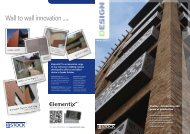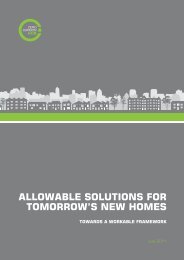Code for sustainable homes: case studies volume 2 - Gov.uk
Code for sustainable homes: case studies volume 2 - Gov.uk
Code for sustainable homes: case studies volume 2 - Gov.uk
Create successful ePaper yourself
Turn your PDF publications into a flip-book with our unique Google optimized e-Paper software.
TECHNICAL<br />
PERFORMANCE<br />
External Fabric<br />
300mm cavity wall consisting of an external<br />
brickwork skin, 100m cavity fully filled with<br />
100mm mineral wool insulation, an internal<br />
skin of 100mm lignacite blockwork. The<br />
external walls are finished using internal thermal<br />
enhancement comprising of thermal laminate<br />
plasterboard comprising of 35.5mm extruded<br />
polystyrene insulation bonded to 9.5mm wall<br />
board. U-value of 0.23W/m 2 K<br />
Roof<br />
Flat roof constructed using timber joist,<br />
plywood decking and a PVC single ply roof<br />
membrane. The <strong>Code</strong> Level 3 houses have<br />
300mm mineral wool insulation laid in two<br />
layers with the first of 100mm insulation<br />
laid between ceiling ties to trusses with<br />
second layer of 200mm insulation laid<br />
at 90 degrees. U-value of 0.13W/m 2 K.<br />
The flats were provided with a standard<br />
90mm rigid urethane board laid directly<br />
on the roof decking. U-value of 0.13W/m 2 K<br />
Floor<br />
<strong>Code</strong> Level 3 Houses – 65mm screed with<br />
85mm urethane insulation. U-value of<br />
0.15W/m 2 K.<br />
Flats – 65mm screed with 50mm urethane<br />
insulation. U-value of 0.2W/m 2 K.<br />
Doors and Windows<br />
All doors and windows are double glazed.<br />
U-values (wholeframe) of 1.5W/m 2 K.<br />
Air-permeability<br />
The target was 5m3/h@50pa. The <strong>Code</strong><br />
Level 3 houses achieved 4.97 through<br />
testing, but the flats are yet to be tested.<br />
SCHEME<br />
IMPLEMENTATION<br />
The design of the completed units is typical<br />
of newer <strong>homes</strong> in the surrounding area,<br />
with only the solar thermal panels on the<br />
houses and the photovoltaic cells on the flats<br />
presenting any less than usual design features.<br />
The decision to achieve <strong>Code</strong> Level 3 was<br />
driven solely by the housing association funding<br />
requirements. In order to achieve <strong>Code</strong> Level 3<br />
the developer made a number of changes to its<br />
standard house types. This included increasing<br />
insulation to the housing association houses<br />
(there were no changes to the insulation levels<br />
<strong>for</strong> the flats).<br />
CASE STUDY 7 | CODE FOR SUSTAINABLE HOMES | 29



